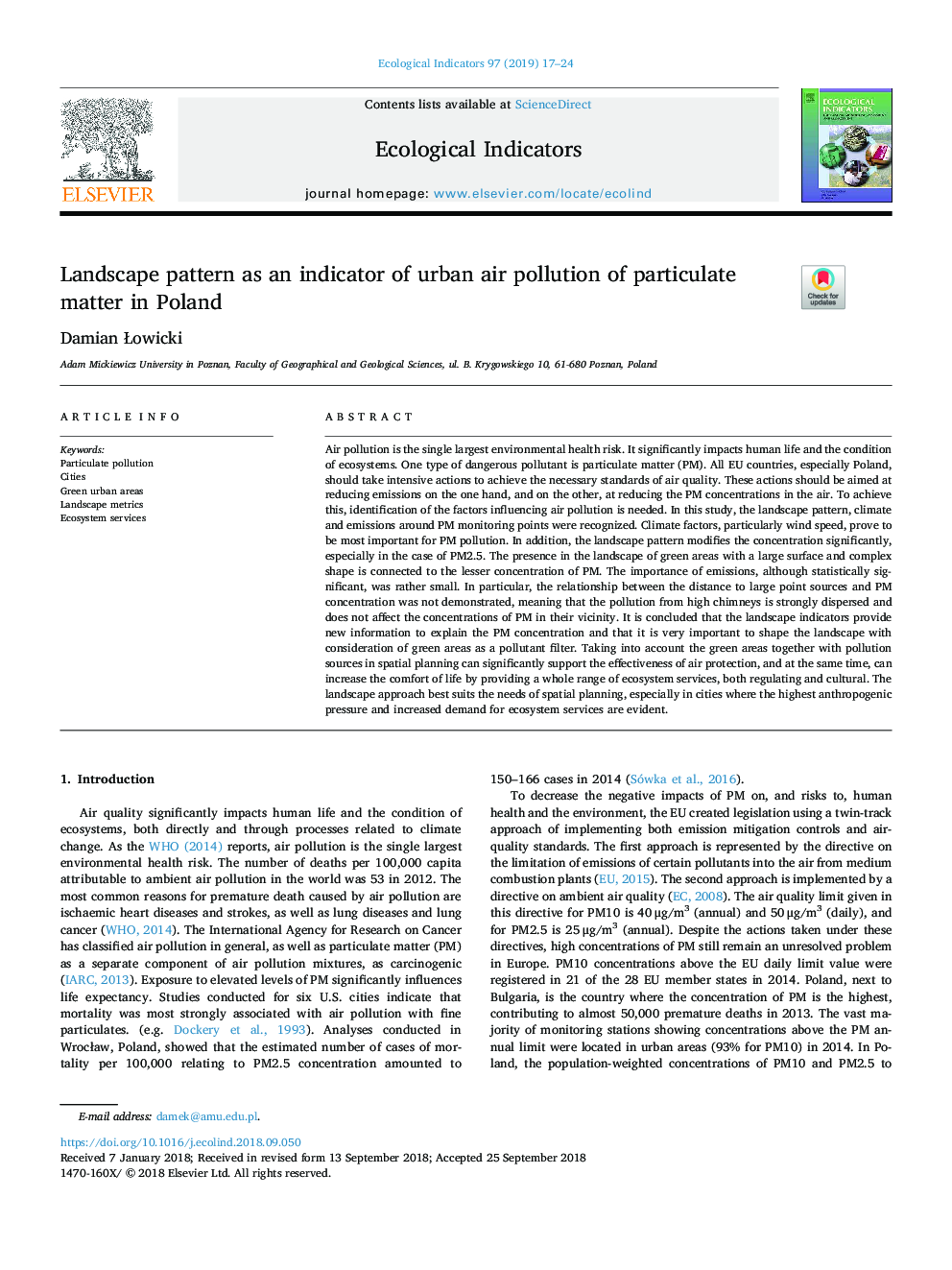| کد مقاله | کد نشریه | سال انتشار | مقاله انگلیسی | نسخه تمام متن |
|---|---|---|---|---|
| 11010258 | 1810984 | 2019 | 8 صفحه PDF | دانلود رایگان |
عنوان انگلیسی مقاله ISI
Landscape pattern as an indicator of urban air pollution of particulate matter in Poland
ترجمه فارسی عنوان
الگوی چشم انداز به عنوان شاخص آلودگی هوای شهری در لهستان
دانلود مقاله + سفارش ترجمه
دانلود مقاله ISI انگلیسی
رایگان برای ایرانیان
کلمات کلیدی
آلودگی ذرات، شهرها، مناطق شهری سبز، معیارهای چشم انداز، خدمات محیط زیستی،
موضوعات مرتبط
علوم زیستی و بیوفناوری
علوم کشاورزی و بیولوژیک
بوم شناسی، تکامل، رفتار و سامانه شناسی
چکیده انگلیسی
Air pollution is the single largest environmental health risk. It significantly impacts human life and the condition of ecosystems. One type of dangerous pollutant is particulate matter (PM). All EU countries, especially Poland, should take intensive actions to achieve the necessary standards of air quality. These actions should be aimed at reducing emissions on the one hand, and on the other, at reducing the PM concentrations in the air. To achieve this, identification of the factors influencing air pollution is needed. In this study, the landscape pattern, climate and emissions around PM monitoring points were recognized. Climate factors, particularly wind speed, prove to be most important for PM pollution. In addition, the landscape pattern modifies the concentration significantly, especially in the case of PM2.5. The presence in the landscape of green areas with a large surface and complex shape is connected to the lesser concentration of PM. The importance of emissions, although statistically significant, was rather small. In particular, the relationship between the distance to large point sources and PM concentration was not demonstrated, meaning that the pollution from high chimneys is strongly dispersed and does not affect the concentrations of PM in their vicinity. It is concluded that the landscape indicators provide new information to explain the PM concentration and that it is very important to shape the landscape with consideration of green areas as a pollutant filter. Taking into account the green areas together with pollution sources in spatial planning can significantly support the effectiveness of air protection, and at the same time, can increase the comfort of life by providing a whole range of ecosystem services, both regulating and cultural. The landscape approach best suits the needs of spatial planning, especially in cities where the highest anthropogenic pressure and increased demand for ecosystem services are evident.
ناشر
Database: Elsevier - ScienceDirect (ساینس دایرکت)
Journal: Ecological Indicators - Volume 97, February 2019, Pages 17-24
Journal: Ecological Indicators - Volume 97, February 2019, Pages 17-24
نویسندگان
Damian Åowicki,
